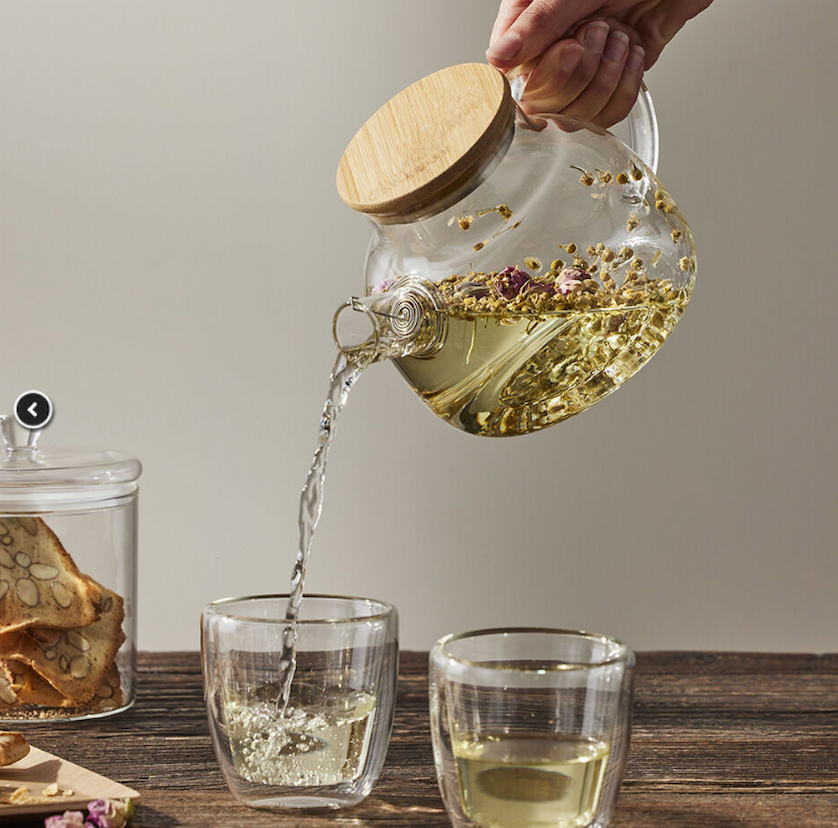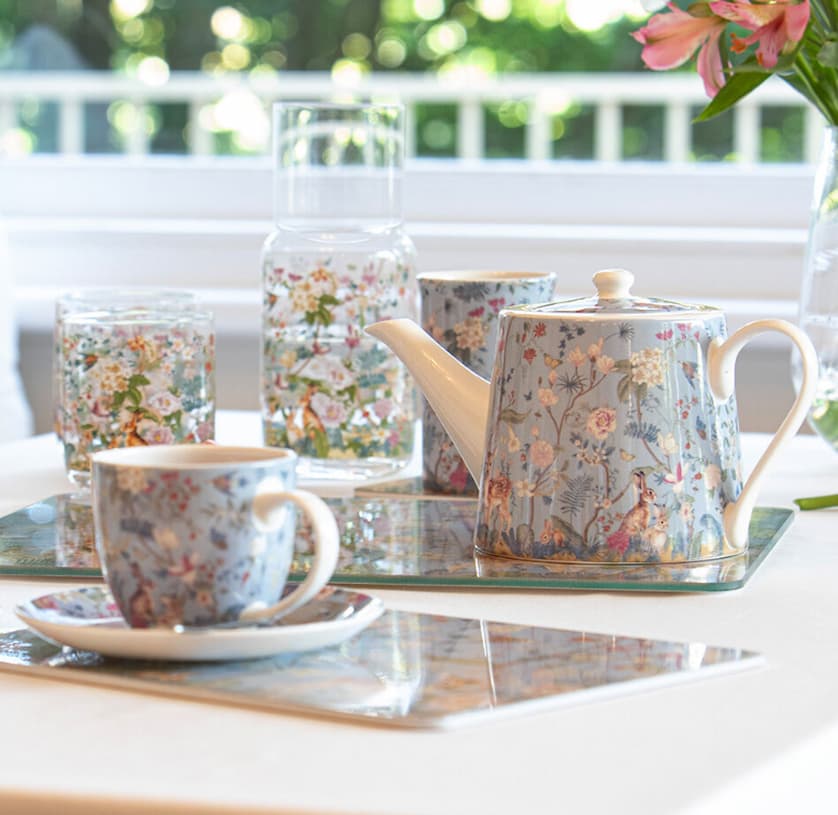Teapots are the centrepiece of every sipping ceremony. This said, you want to pick one that pours with flair and ease. Beyond looks, it’s the material that shapes the flavour, heat, and overall experience. Ceramic, porcelain, cast iron, and glass teapots are the most common choices, each offering its unique benefits to your brew and table.
Glass

A glass teapot with its transparent body brings a visual joy to your sipping ritual because let’s be honest, tea should look as good as it tastes. It lets you admire the gentle swirl of steeping leaves, the shifting shades as the infusion deepens, and the delicate blooms of flowers or herbs releasing their aroma. For those who appreciate a modern, minimalist aesthetic, glass tea pots make a nice addition to their collection, bringing a sleek, sophisticated charm to the table.
Design-wise, glass teapots with built-in infusers offer convenience and style in one. Crafted from heat-resistant borosilicate glass, these teapots let you watch your tea leaves dance as they steep, while the removable stainless steel infuser makes brewing loose-leaf tea effortless and mess-free.
Size-wise, you can opt for a smaller pot for solo sipping or a larger size for gatherings, long chats, or when you want to set the pot down and let everyone help themselves. Either way, there are a variety of sleek, durable options to suit your needs and preferences.
Beyond their stunning appearance and convenience, these see-through brewing vessels are good at preserving the pure, unaltered flavour of your drink. Unlike other materials, including ceramic, clay, or cast iron, glass doesn’t absorb oils, odours, or flavours from previous brews. This means every cup you pour tastes exactly as intended, without any lingering notes from past teas.
Apart from preserving the pure, unaltered flavour of your brew, the non-porous surface of glass also makes these teapots easier to clean. Since glass doesn’t absorb stains, odours, or oils, residue from previous brews can be wiped or rinsed away easily, leaving no lingering flavours or discolouration.
One of the common drawbacks of glass teapots is their fragility. They’re more prone to chips and cracks than their ceramic counterparts. Although well-made glass teapots, especially those crafted from borosilicate glass, are far more resistant to thermal shock and everyday wear than ordinary thin glass, still, sudden extreme temperature changes can cause cracks or breakage.
Also, glass doesn’t retain heat as well as ceramic, porcelain, or cast iron. Unless you’re using a double-walled design, your tea might cool quicker than you’d like. This makes glass options better suited for fast sippers or those who enjoy smaller portions.
Ceramic
Ceramic teapots are another time-honoured favourite because of their charming looks and superior heat retention. Their thicker walls and porous material help keep your brew warm for longer. For those who like to savour their cup slowly and enjoy leisurely tea sessions, ceramic models make an ideal addition to their teaware.
Style-wise, ceramic teapots provide a comforting, familiar feel. They come in endless colours, glazes, textures, and patterns, making it easy to find one that reflects your taste. From rustic stoneware to delicate porcelain, ceramic teaware offers incredible diversity. Depending on the clay used, whether it’s stoneware, porcelain, or earthenware, each teapot has its own unique properties in terms of weight, texture and durability.
One downside of this material is that it’s slightly porous. Over time, especially if not glazed properly, it can absorb flavours or odours. Materials like unglazed clay or porous ceramics can trap tea oils and stains over time, making them harder to clean and potentially affecting the taste of future brews. That’s why it’s important to clean your ceramic teapot thoroughly.
Porcelain

Among the many types of ceramics, porcelain is one of the most popular and widely used for teapots. Renowned for its delicate appearance and exceptional strength, porcelain teapots combine beauty and functionality in one. They are often a familiar sight in English afternoon tea traditions, gracing tables with understated sophistication.
Also, with a non-porous and sleek, smooth surface that feels cool to the touch, porcelain is resistant to stains and ideal for preserving the true flavour of your tea.
Cast Iron
If glass is modern and ceramic is classic, then cast iron is enduring. When we mention tea rituals, the first teapot that often comes to mind is a cast-iron one, known as a tetsubin in Japan. It’s heavy, enduring, and symbolic of mindfulness. However, similar to ceramic, cast iron teapots also require special care to prevent rust and can retain flavours if not properly maintained.
So, What’s Your Cup of Tea?
Glass or ceramic? The answer depends on your brewing style, taste preferences, and the little rituals you love. Ask yourself: whether you prefer to drink your tea quickly while it’s piping hot, or like to linger over multiple cups?
Also, do you mind a little extra TLC, or would you rather have something low-fuss and easy to clean? The right teapot is the one you’ll happily reach for again and again.












